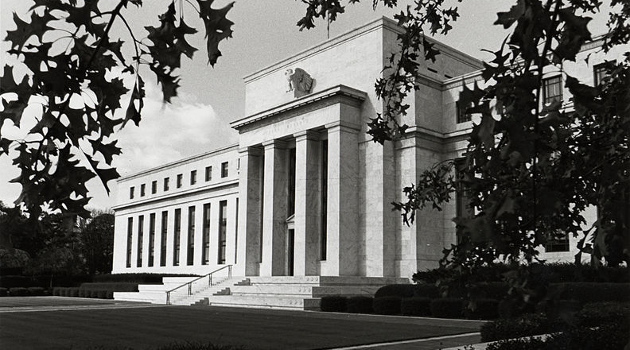Originally published by RealClearMarkets on April 23 2021.
In February, all of the Federal Reserve’s payments systems failed for half a day. The systems include FedWire, which the Fed itself advertises as the “premier electronic funds-transfer service that banks rely on for mission-critical, same-day transactions,” as well as the ACH network offered for payroll and other large transactions. This isn’t the only recent failure; in April 2019, FedWire also went down for hours.
The most obvious, but perhaps not most serious, concern is that the core infrastructure of the U.S. financial system keeps failing. Fedwire processes over $3 trillion in payments per day. The Fed’s ACH network processes over $60 billion per day.
Fortunately, the U.S. payment system is a mix of public (Federal Reserve) and private sector providers. When the Fed systems failed, the private sector systems run by the banks and credit card companies continued to operate, mitigating the impact.
A greater concern is one of management and accountability. The cause of the 2019 outage was never explained. There is no evidence that anyone was held accountable, or any remediation plan put in place; we don’t even know if the cause was the same as the recent one.
The Fed operates payments with the same secrecy it uses for all its other functions and with accountability to no one – no audit or oversight of a function that is generally conducted by the private sector in most countries. While the Federal Reserve has an Inspector General, his office either never bothered to conduct an investigation in 2019 or suppressed its results. While the Fed Chairman is required by law to testify regularly on monetary policy, mum is the word on its payments empire.
All this is made even worse because the Federal Reserve Board and the FOMC – the people we all think of as “the Fed” – do not even run the payment systems networks. They are run by Federal Reserve Banks – the Richmond Reserve Bank in the case of Fedwire and all twelve reserve banks with respect to the ACH system used for business-to-business or business-to-consumer payments. The Fed considers them private sector entities, but answerable only to the Federal Reserve Board; that’s accountability, Fed style. (Each Reserve Bank has a board of directors, but no one has any idea what they do.)
Nothing better indicates the Fed’s perceived immunity from accountability than its response to the most recent failure. The sum total of explanations is this from a spokeswoman: “The incident was caused by an operational error involving an automated data center maintenance process that was inadvertently triggered during business hours. This was human error.” Even the identity of the spokeswoman was kept secret, and the statement is nowhere on the Fed’s website. Nothing to see here, move along.
But even that statement is troubling. First, a system that processes $3 trillion per day and is the core infrastructure of finance should have mechanisms to prevent “human error” from taking it off-line. A fat finger should not halt the most important critical infrastructure in America. Second, such a system should be able to come back online very quickly, which clearly it was unable to do. Third, if one human can create this kind of carnage inadvertently, one wonders what a hostile nation state could accomplish by compromising one such person intentionally.
Imagine, for example, if the entire air traffic control system for the United States went down for three hours, with all traffic suspended, and the response of the FAA was: “This was human error.” Would anyone accept that explanation and move on? Of course not. The NTSB would investigate. The Congress would investigate. The FAA Inspector General would investigate. Someone from 60 Minutes would be at the FAA director’s door. A special commission would be formed. The GAO would do a report. And all that is just for starters.
A final concern is just how much worse this could be in the future. While we currently have a payments system where the failure of one element does not stop commerce from screeching to a halt, the Fed has other plans. It is building its own real-time payments system with the apparent goal of replacing a private sector system that is just now beginning to gain momentum. And members of Congress are proposing and the Fed is now considering offering “Fed accounts,” which would have it take on the role of traditional banks – and even more of the payments system. Meanwhile, the Fed advertises, “When it absolutely matters, the Fedwire Funds Service is the one to trust to execute your individual payments with certainty and finality.”
Before the Fed proceeds with those ambitions, there needs to be a full investigation of its recent failures and the defects in management and technology that produced them. Clearly, the Fed has no interest or incentive to undertake such a review itself, and its IG is asleep at the switch. How about Congress conduct a hearing to ask what went wrong the first time, what went wrong the second time, who was responsible, and what can be done to prevent it from happening again?
Many people believe that it makes sense for the Federal Reserve to maintain unique independence from Congressional and Presidential audit and oversight with respect to its monetary policy decisions, with the goal of keeping politics out of those decisions. That is debatable. But no one can explain why that independence should extend to how its computers work, especially when they don’t work.
———
Image credit: Federal Reserve | United States government Work.

